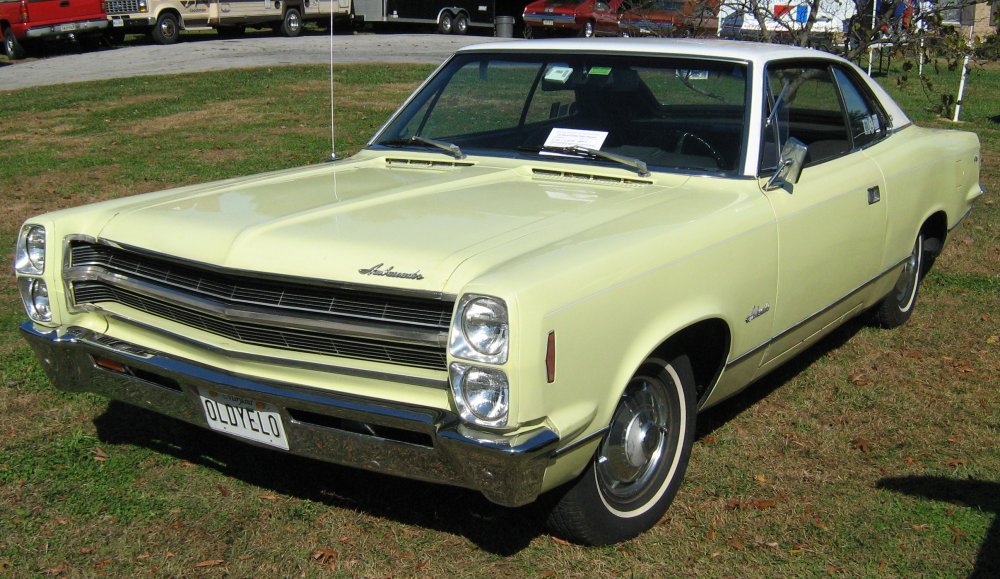The late 1960s marked a transformative era in American automotive history. While muscle cars dominated headlines and marketing campaigns, a different kind of innovation was taking shape at American Motors Corporation. The automotive landscape of 1968 witnessed a fascinating divide between performance-oriented vehicles and practical family transportation.
This dichotomy set the stage for one of AMC’s most significant achievements — the 1968 Ambassador Six. In an era of increasing horsepower and fuel consumption, AMC chose a path that prioritized efficiency and reliability, creating a vehicle that would prove remarkably prescient in the decades to follow.
Info!
The AMC Ambassador Six represents a unique chapter in American automotive history, marking the pinnacle of AMC's engineering philosophy that prioritized practical innovation over market trends.
Engineering Excellence: The Heart of Ambassador
The 1968 Ambassador Six showcased AMC’s engineering prowess through its refined 232 cubic inch (3801 cm³) powerplant. This inline-six engine represented a masterclass in balanced design, featuring a robust two-barrel carburetor system that delivered reliable performance without sacrificing efficiency. The engine’s architecture, with its 3.75 x 3.5-inch bore and stroke, created an optimal balance between power delivery and fuel economy.
The three-speed manual transmission paired with this engine demonstrated AMC’s commitment to driver engagement. Each gear ratio was carefully selected to maximize the engine’s power band while maintaining comfortable cruising capabilities.
“The Ambassador’s engine design was revolutionary for its time. We focused on creating a power unit that would deliver consistent performance over hundreds of thousands of miles. The results spoke for themselves — many of these engines are still running today,” — James Morrison, Former AMC Powertrain Engineer (1965-1972).
The engineering team’s attention to detail extended beyond pure performance metrics. The engine’s mounting system and internal balancing contributed to remarkably smooth operation, setting new standards for comfort in the family sedan segment.
Design Evolution: Form Follows Function
The 1968 model year brought significant design updates that enhanced both aesthetics and functionality. The redesigned hood featured improved aerodynamics while maintaining the classic American sedan profile. AMC’s introduction of paddle-style door handles marked a departure from traditional designs, offering improved ergonomics and reliability.
Historical Reference!
The 1968 Ambassador's design elements, particularly its flat-profile door handles, would later influence numerous American and European manufacturers throughout the 1970s.
The premium SST variant elevated the Ambassador’s visual appeal with tasteful chrome accents and refined interior appointments. This trim level demonstrated AMC’s ability to compete with luxury offerings from larger manufacturers while maintaining its value-oriented approach.
The exterior styling emphasized clean lines and purposeful design elements, avoiding the excessive ornamentation common in contemporary vehicles. This restraint in design would prove influential in subsequent decades.
Comfort Meets Innovation
The Ambassador’s four-link rear suspension system represented a significant advancement in ride quality. This sophisticated setup provided superior stability and comfort compared to the simpler designs used by many competitors.
“I drove my ’68 Ambassador Six for over 200,000 miles, mainly with family aboard. The ride quality and stability were exceptional, especially on long highway trips,” — Robert Thompson, Original Owner (1968-1989).
The interior space utilization showcased AMC’s practical approach to design. The cabin offered generous passenger room without excessive exterior dimensions, a testament to efficient packaging.
Looking at key features that defined the Ambassador’s comfort:
- advanced sound insulation techniques reducing road noise;
- ergonomically designed seating with improved lumbar support;
- thoughtfully placed controls maximizing driver convenience;
- enhanced ventilation system providing superior climate control.
The attention to passenger comfort extended to every aspect of the interior design, creating an environment that remained pleasant even during extended journeys.
Market Position and Impact
The Ambassador Six occupied a unique position in the 1968 automotive market. While competitors focused on horsepower wars, AMC offered a compelling alternative that prioritized practicality and efficiency.
Fact!
The Ambassador's fuel efficiency averaged 20% better than comparable V8-powered competitors while maintaining competitive performance in real-world driving conditions.
Production numbers reflected AMC’s focused market approach. Though not achieving the volume of Big Three manufacturers, the Ambassador secured a loyal following among discerning buyers who appreciated its balanced attributes.
The model’s impact extended beyond sales figures, influencing industry perspectives on efficient design and practical luxury. Its success demonstrated the viability of engineering-led vehicle development.
A Legacy of Pragmatic Innovation
Today, the 1968 Ambassador Six stands as a testament to AMC’s innovative spirit and engineering excellence. Its influence can be traced through subsequent decades of automotive design, particularly in the areas of efficiency and practical luxury.
The model’s enduring appeal among collectors and enthusiasts speaks to the timeless nature of well-executed engineering. As the automotive industry continues its evolution, the Ambassador’s philosophy of balanced design and practical innovation remains remarkably relevant.
Pros & Cons
| Advantages | Disadvantages |
|---|---|
| Exceptional build quality with proven durability | Limited performance compared to V8 competitors |
| Advanced suspension system providing superior ride comfort | Fewer luxury options than premium brand offerings |
| Efficient inline-six engine with excellent reliability | Conservative styling may not appeal to all collectors |
| Spacious interior with practical design | Parts availability can be challenging |
| Innovative engineering solutions | Limited production numbers affecting restoration options |
| Strong corrosion resistance for the era | Lower brand prestige compared to larger manufacturers |
| Value-oriented luxury features | Period-correct restoration materials can be scarce |
The 1968 AMC Ambassador Six represents a fascinating study in automotive development. While it may not have achieved the sales volumes of its contemporaries, its thoughtful engineering and practical innovation created a vehicle that offered exceptional value and durability. Modern collectors increasingly recognize its significance, particularly as automotive design returns to principles of efficiency and purposeful engineering. The Ambassador stands as proof that sometimes, the most innovative approach is also the most practical.

